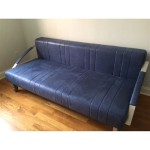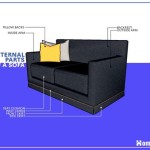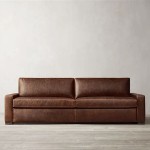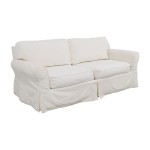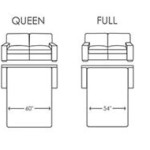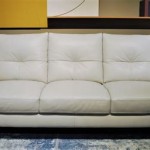Design Your Own Sleeper Sofa: A Comprehensive Guide
The sleeper sofa, a versatile piece of furniture offering both seating and sleeping accommodations, has become a staple in many homes. Often utilized in smaller living spaces, guest rooms, or home offices, sleeper sofas provide a practical solution for accommodating overnight visitors without sacrificing valuable floor space. However, the market is often flooded with generic options that may not perfectly align with individual design preferences, spatial constraints, or specific comfort requirements. Designing a custom sleeper sofa allows one to tailor the furniture to meet precise needs, resulting in a functional and aesthetically pleasing addition to any environment.
The process of designing a sleeper sofa involves careful consideration of several key elements, including the frame construction, sleeping mechanism, mattress type, upholstery fabric, dimensions, and style. Each of these factors contributes to the overall comfort, durability, and visual appeal of the final product. This article will provide a detailed overview of these considerations, offering guidance on creating a sleeper sofa that is both functional and tailored to specific needs.
Frame Construction: The Foundation of Durability
The frame of a sleeper sofa serves as its structural foundation, determining its overall stability and longevity. The materials used in its construction significantly impact its ability to withstand daily use and the repeated stress of converting between sofa and bed. Solid hardwood frames, such as those made from kiln-dried hardwoods like oak, maple, or ash, are considered the most durable option. Kiln-drying removes moisture from the wood, preventing warping and cracking over time. These hardwoods offer exceptional strength and resistance to wear, ensuring that the sleeper sofa can withstand years of use.
While hardwood is the preferred choice, some manufacturers utilize engineered wood products, such as plywood or particleboard, either as a supplement to hardwood or as the primary frame material. High-quality plywood, constructed with multiple layers of veneer bonded together, can provide adequate strength and stability. However, it is crucial to ensure that the plywood is furniture-grade and free of formaldehyde, which can off-gas and negatively impact indoor air quality. Particleboard, a less expensive option, is generally less durable and more susceptible to damage from moisture or impact. When selecting a sleeper sofa with a frame that incorporates engineered wood, it is important to carefully evaluate the quality and construction of the wood product.
The joinery method used to connect the frame components also plays a critical role in its overall strength. Traditional joinery techniques, such as mortise-and-tenon joints, dovetail joints, and dowel joints, provide superior strength and stability compared to weaker methods like stapling or screwing. These traditional methods create a strong, interlocking connection between the frame pieces, minimizing the risk of loosening or breaking over time. Examining the joinery methods employed in the frame construction is a key step in assessing the overall quality and durability of a sleeper sofa.
Sleeping Mechanism: Functionality and Ease of Use
The sleeping mechanism is the core component that allows a sofa to transform into a bed. Various types of mechanisms are available, each offering different levels of comfort, ease of use, and space efficiency. The most common types include pull-out mechanisms, fold-down mechanisms (also known as futons), and click-clack mechanisms.
Pull-out mechanisms, often found in traditional sleeper sofas, typically feature a metal frame that unfolds from beneath the seating cushions. These mechanisms generally provide a more comfortable sleeping surface than fold-down options, as they typically accommodate a thicker mattress. When selecting a pull-out mechanism, it is essential to consider the smoothness of the unfolding action, the stability of the frame when extended, and the quality of the locking mechanism that secures the bed in both the open and closed positions. A well-designed pull-out mechanism should operate effortlessly and provide a secure and stable sleeping platform.
Fold-down mechanisms, commonly found in futons, transform the sofa into a bed by folding the backrest down to a horizontal position. These mechanisms are often simpler and more space-efficient than pull-out options, making them suitable for smaller spaces. However, the sleeping surface may be less comfortable, as the mattress is typically thinner and more prone to sagging. When selecting a fold-down mechanism, it is crucial to consider the sturdiness of the hinges and the evenness of the sleeping surface when the sofa is in the bed position.
Click-clack mechanisms function similarly to fold-down mechanisms, but they often feature multiple adjustable positions, offering greater versatility. These mechanisms allow the backrest to be adjusted to various angles, providing options for lounging, reading, or sleeping. While click-clack mechanisms can be convenient, it is important to ensure that the locking mechanism is secure and that the frame is sturdy enough to support the weight of multiple occupants in different positions.
Regardless of the type of mechanism chosen, it is vital to test its functionality and ease of use thoroughly. A well-designed sleeping mechanism should operate smoothly and require minimal effort to convert between sofa and bed. It should also be durable enough to withstand repeated use without showing signs of wear or malfunction.
Mattress Type: Optimizing Sleeping Comfort
The mattress is arguably the most important element in determining the comfort of a sleeper sofa. The type of mattress, its thickness, and its construction all significantly impact the quality of sleep that it provides. Common mattress options for sleeper sofas include innerspring mattresses, memory foam mattresses, and latex mattresses. Each type offers unique advantages and disadvantages in terms of comfort, support, and durability.
Innerspring mattresses, the most traditional option, feature a network of interconnected coils that provide support and bounce. The comfort level of an innerspring mattress depends on the gauge of the coils, the number of coils, and the type of padding used to cushion the springs. While innerspring mattresses can be relatively affordable, they may not provide the same level of contouring and pressure relief as memory foam or latex mattresses. They can also be prone to sagging over time, particularly if the coils are not of high quality.
Memory foam mattresses conform to the body's shape, providing excellent pressure relief and support. This type of mattress can alleviate pressure points and promote proper spinal alignment, making it a good choice for individuals with back pain or other musculoskeletal issues. However, memory foam mattresses can trap heat, leading to discomfort for some sleepers. Gel-infused memory foam, which incorporates cooling gel particles, can help to mitigate this issue. It is important to consider the density of the memory foam, as higher-density foam generally provides better support and durability.
Latex mattresses, made from natural or synthetic rubber, offer a balance of comfort, support, and durability. Natural latex mattresses are particularly desirable for their eco-friendliness and hypoallergenic properties. Latex mattresses are naturally breathable, helping to regulate temperature and prevent overheating. They also offer excellent pressure relief and support, conforming to the body's shape without feeling overly soft or sinking. While latex mattresses can be more expensive than innerspring or memory foam options, their durability and long-term comfort make them a worthwhile investment.
The thickness of the mattress is another crucial factor to consider. Sleeper sofa mattresses are typically thinner than standard mattresses to accommodate the folding mechanism. However, a mattress that is too thin may not provide adequate support or cushioning. Aim for a mattress that is at least 4 inches thick, and preferably 5 inches or more, to ensure a comfortable sleeping surface.
In addition to the type and thickness of the mattress, it is important to consider the quality of the mattress cover. A breathable and hypoallergenic cover can enhance comfort and prevent the buildup of allergens and dust mites. Look for covers made from natural fibers like cotton or bamboo, or synthetic materials like Tencel, which offer excellent moisture-wicking properties.
Upholstery Fabric: Aesthetics and Functionality
The upholstery fabric plays a significant role in the overall appearance and durability of a sleeper sofa. The choice of fabric should consider both aesthetic preferences and functional requirements, such as stain resistance, durability, and ease of cleaning. A wide range of fabrics is available, each offering different characteristics in terms of texture, color, pattern, and performance.
Natural fabrics, such as cotton, linen, and wool, offer a soft and comfortable feel. Cotton is a popular choice for its affordability and breathability. However, it is prone to wrinkling and staining. Linen is a durable and luxurious fabric with a natural texture, but it can be more expensive and susceptible to fading. Wool is a naturally stain-resistant and durable fabric that offers excellent insulation, making it a good choice for colder climates. However, it can be more difficult to clean than other fabrics.
Synthetic fabrics, such as polyester, microfiber, and acrylic, offer enhanced durability and stain resistance. Polyester is a versatile and affordable fabric that resists wrinkling and fading. Microfiber is a soft and plush fabric that is highly resistant to stains and spills. Acrylic is a durable and fade-resistant fabric that is often used as a substitute for wool. Synthetic fabrics are generally easier to clean than natural fabrics and can be a good choice for households with children or pets.
Performance fabrics, such as those treated with stain-resistant or water-repellent finishes, offer superior protection against spills and stains. These fabrics are designed to withstand heavy use and frequent cleaning, making them ideal for high-traffic areas. Look for fabrics that are certified by industry standards, such as OEKO-TEX, which ensures that the fabric is free of harmful chemicals.
When selecting an upholstery fabric, it is important to consider the color and pattern. The color should complement the existing decor of the room and create the desired mood. Lighter colors can brighten up a space, while darker colors can add warmth and sophistication. Patterns can add visual interest, but it is important to choose a pattern that is not too busy or overwhelming. Consider the size and scale of the pattern in relation to the size of the sleeper sofa and the overall dimensions of the room.
In addition to the type of fabric, it is also important to consider the weave and construction. A tightly woven fabric will be more durable and resistant to wear and tear. Look for fabrics with a high thread count, which indicates a denser and more durable weave. The construction of the fabric should also be considered, as some fabrics are more prone to pilling or snagging than others.
Finally, it is essential to test the fabric's durability and cleanability before making a final decision. Request samples of the fabrics you are considering and test them for stain resistance and abrasion. Follow the manufacturer's cleaning instructions to ensure that the fabric can be easily maintained and kept looking its best for years to come.
Dimensions and Style: Tailoring to Specific Needs
The dimensions of the sleeper sofa are crucial for ensuring that it fits comfortably within the intended space and meets specific seating and sleeping requirements. Measure the available space carefully, considering both the sofa's footprint in its closed position and the extended length when it is in the bed position. Leave adequate clearance around the sofa for easy access and movement. Consider the height of the sofa seat and backrest to ensure comfortable seating for individuals of different heights.
The style of the sleeper sofa should complement the existing decor of the room and reflect personal preferences. A wide range of styles is available, from traditional and classic to modern and contemporary. Consider the overall aesthetic of the room and choose a style that harmonizes with the existing furniture and accessories. Pay attention to details such as the shape of the arms, the style of the legs, and the overall silhouette of the sofa.
Customizing the arm style can significantly impact the overall look and feel of a sleeper sofa. Options include rolled arms, track arms, flared arms, and Lawson arms. Rolled arms offer a traditional and elegant look, while track arms provide a clean and modern aesthetic. Flared arms add a touch of flair and visual interest, while Lawson arms offer a comfortable and supportive seating experience. Choose an arm style that complements the overall style of the sofa and provides the desired level of comfort.
The legs of the sleeper sofa can also contribute to its overall style and functionality. Options include tapered legs, splayed legs, block legs, and metal legs. Tapered legs offer a classic and refined look, while splayed legs provide a mid-century modern aesthetic. Block legs add a touch of solidity and stability, while metal legs offer a sleek and contemporary look. Consider the height of the legs, as this can impact the overall height of the sofa and the ease of cleaning underneath it.
Adding decorative pillows can enhance the comfort and visual appeal of a sleeper sofa. Choose pillows that complement the upholstery fabric in terms of color, pattern, and texture. Experiment with different sizes and shapes to create a visually interesting arrangement. Consider adding lumbar pillows for extra back support and comfort.
By carefully considering the dimensions and style of the sleeper sofa, one can create a piece of furniture that is both functional and aesthetically pleasing, perfectly tailored to the specific needs and preferences of the user and the environment in which it will reside.

Design Your Own Bespoke Sofa Or Corner Nabru

Build Your Own Sofa Bed Diy Couch Plans Wannabe Clutter Free

82 7 Cabrio Bett Vollschlafsofa Leath Aire Gepolstertes Aufbewahrungssofa Sofa Bed With Storage Full Sleeper Convertible

The 21 Best Sleeper Sofas Of 2024 Based On Reviews

9 Sofa Bed Ideas For Small Spaces Cian Blog

50 Easy Ways To Build A Diy Couch Without Breaking The Bank

Sofa Guide For 2024 Reviews By Wirecutter

Recast Plus Sleeper Sofa More Options Elegant Retro Style Sofas Bed

The Very Best Sleeper Sofas Tested And Reviewed By Our Editors Architectural Digest

Best Sleeper Sofas 12 Couches Your Guests Won T Mind Sleeping On Time Stamped

